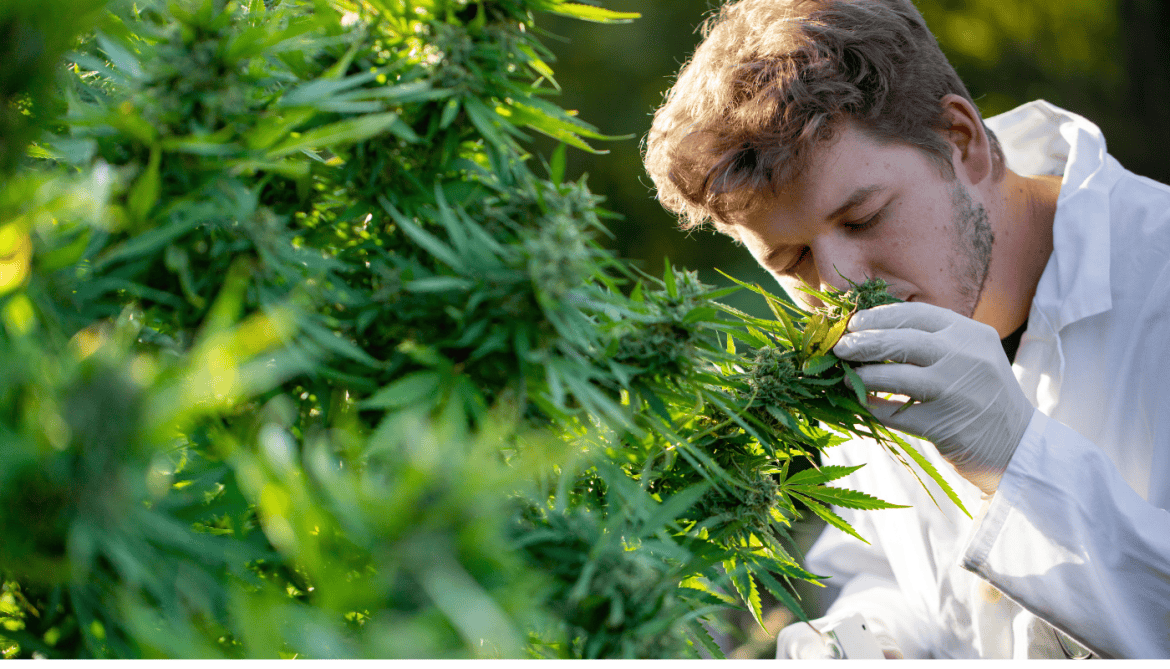A New Language for Cannabis: Scientists Develop a 25-Term Aroma Glossary
A team of researchers from Oregon State University has introduced a new framework for describing the aroma of cannabis. Published in the journal PLOS One, the study represents a major step forward in how marijuana is categorized, perceived, and marketed—especially as legal cannabis products become increasingly sophisticated and widely available.
The researchers aimed to bring scientific rigor to the way cannabis aromas are described. Instead of relying on vague or inconsistent marketing terms like “earthy” or “relaxing,” they constructed a 25-term aroma lexicon based on real-world sensory data from nearly 100 flower samples. This glossary could become a key reference for both producers and consumers, shaping future standards in cannabis classification and labeling.
How the Study Was Conducted
The researchers recruited a trained sensory panel of 21 individuals to evaluate 91 different cannabis flower samples. Participants were tasked with identifying specific aroma descriptors they detected in each sample—without burning the product or smoking it. In total, 8,075 descriptors were recorded during the process.
From this, three terms emerged as the most commonly used: “herbal,” “citrus,” and “woody.” These accounted for 26% of all descriptors chosen by the panel. The full lexicon is designed to create a structured, consistent vocabulary for describing unburnt cannabis, one that could serve both scientific and commercial purposes.
The authors emphasize that this glossary is not a final or universal list but a foundational tool for future refinement. It offers a common language that makes cannabis evaluation more consistent, transparent, and accessible.
The Terpene Assumption—Challenged by Data
For years, the cannabis industry has promoted the idea that terpenes—the aromatic compounds found in many plants—are the primary drivers behind a strain’s unique smell. But this study casts serious doubt on that assumption.
Chemical analysis showed that terpene profiles formed clear groupings, but these groupings did not reliably align with how human panelists perceived the aroma. Only one terpene, terpinolene, showed a consistent association with specific descriptors like “citrus” and “chemical.” Beyond that, there was no strong correlation between terpene levels and the intensity or character of the aroma.
Even total terpene concentration failed to predict how frequently certain aroma terms were used. This suggests that relying on terpene content as a proxy for smell—and enjoyment—is misleading.
THC, CBD, and the Scent Connection
Another common belief in cannabis marketing is that THC and CBD levels determine not just potency, but aroma and overall user experience. This too was challenged by the study’s results.
Samples with high THC and low CBD were more often associated with descriptors like “skunky,” “musty,” and “animalic.” In contrast, strains with lower THC and higher CBD tended to smell “citrus,” “fruity,” or “candy-like.”
These findings matter because aroma—not potency—is the only known predictor of subjective enjoyment in cannabis use. While THC levels dominate most product labels, this research underscores the importance of sensory experience and challenges the current overemphasis on cannabinoid content.
What Actually Influences Cannabis Aroma?
If not terpenes or cannabinoid ratios, then what causes the wide variety of cannabis aromas? According to the authors, the answer may lie in other lesser-studied chemical compounds.
They point to esters, aldehydes, and volatile sulfur compounds as potential contributors. These chemicals likely interact in complex, synergistic ways to produce nuanced aromas that aren’t reflected in simple terpene profiles. The authors call for further research into these compounds, which could unlock deeper understanding and more accurate classification systems.
Future Implications for Industry and Science
As the cannabis market matures and becomes more regulated, tools like this aroma lexicon will be essential for standardizing quality and improving consumer education. The study lays a foundation for future research that could include a larger, more diverse sample set of cannabis flowers and a broader range of descriptors.
The researchers also emphasize the need to evaluate post-harvest factors—such as drying methods, trimming styles, and storage conditions—which likely influence aroma and overall product quality. Additionally, including consumer feedback in future studies could help link sensory data to real-world preferences, ultimately guiding both breeding and production practices.
Exploring Aroma in a Broader Cannabis Context
The cannabis aroma glossary adds to a growing body of research focused on better understanding the plant’s full potential. For example, researchers are exploring how THC-infused beverages are reshaping social drinking habits read more, and how rare compounds like CBGD could offer new benefits for skin health and inflammation explore the findings. Other studies even show how hemp seeds in beer can enhance nutrition without the intoxicating effects learn more here.
FAQ: Cannabis Aroma Glossary and Its Implications
1. Why did scientists create a cannabis aroma glossary?
To bring structure and scientific consistency to how cannabis aromas are described, especially in a rapidly growing and often unregulated industry.
2. What are the most common cannabis aroma descriptors?
The top three identified were “herbal,” “citrus,” and “woody,” based on evaluations of 91 flower samples.
3. Do terpenes determine how cannabis smells?
Not entirely. While terpenes contribute to aroma, the study found they are poor predictors of how cannabis actually smells to people.
4. What role do THC and CBD play in aroma?
Strains high in THC tended to smell more “skunky” or “animalic,” while higher-CBD strains were more likely to be described as “fruity” or “candy-like.”
5. How could this glossary impact the cannabis industry?
It could lead to more accurate labeling, better product development, and a greater focus on aroma-driven quality rather than just THC content.
6. Will the glossary be expanded in the future?
Yes. Researchers see this as a foundational step and plan to expand the list with more data, compounds, and consumer input over time.

